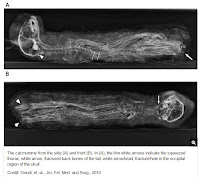Life Histories of Theban Tombs
Life Histories of Theban Tombs (LHTT) focuses on a cluster of rock-cut tombs built during the 2nd millennium BC at the hillside of Sheikh ‘Abd el-Qurna in Western Thebes. The project draws on an integrative archaeological perspective that combines archaeological research with scientific, material, and historical analysis. Its main objectives are to investigate the natural and anthropogenic evolution of the hillside and to explore the history of the tombs, objects, and people connected with it, from the early 2nd millennium BC to the 20th century. LHTT prioritizes research procedures that give relevance to detail and variation, and uses technical and electronic equipment that supports quantifiable, precise data collection often on a micro-analytic level (Research). Digital data processing and an interactive database system, which will eventually be transmitted into an open source for students of archaeology and related fields, are also an important part of the research strategy.
Steep commute gave ancient Egyptian workers osteoarthritis
Commuting to work can be a real pain, and it was no different in ancient Egypt. About 3500 years ago, the artisans who dug out and decorated the rock-cut royal tombs in the Valley of the Kings—the burial ground of Egypt's New Kingdom pharaohs—had to walk about 2 kilometers from their homes, over the Theban hills, to the royal necropolis for work. It was a steep climb, repeated week after week for years, leaving them suffering from osteoarthritis in the knees and ankles, according to a new study.
Zahed Taj-Eddin’s ‘Shabtis: Suspended Truth
Responding to the current political debate on the subject of migration, Manchester Museum has commissioned a gallery installation by Syrian-born artist Zahed Taj-Eddin, which reflects on the Museum’s world-class Egyptology collection. Zahed Taj-Eddin was inspired particularly by Manchester Museum’s extensive collection of shabti figurines, which were placed in large numbers in tombs to act as servants for the afterlife. He has previously created 99 faience ceramic ‘Nu’ Shabtis for popular shows at the V&A, Petrie Museum of Egyptian Archaeology and elsewhere.
Surprise! What 3D Scan Revealed Inside Egyptian Cat Mummy (video)
Behind the scenes at the University of Aberdeen Museums, researchers are using high-tech 3D imaging software to reveal what is inside a 2,000-year-old Egyptian cat mummy and other ancient mummified artifacts in the museums' collections.
In his introduction, author Ronald Fritze defines Egyptomania as “a fascination with ancient Egypt in its many aspects.” He sees it as a phenomenon that has existed for 3,000 years or more and can take scholarly and popular culture forms. The Egypt of myth and legend attracts the most interest. Fritze states that his book “will primarily concentrate on the idea of Egypt and Egyptomania in popular culture.” The author is dean of arts and sciences and professor of history at Athens State University in Alabama.
A fragment from a mysterious life-sized pinky finger from an ancient Egyptian statue has been discovered by the Temple Mount Sifting Project.
The find comes one week after the project announced it lost government funding, and would have to cease operations.
Famed Egyptologist Zahi Hawass appointed IFPSD Cultural Heritage Ambassador
The International Federation for Peace and Sustainable Development chose Egypt's Hawass for his contributions to the field of archaeology, in both excavation and conservation.
photo credit: COURTESY OF TEMPLE MOUNT SIFTING PROJECT
A fragment from a mysterious life-sized pinky finger from an ancient Egyptian statue has been discovered by the Temple Mount Sifting Project.
The find comes one week after the project announced it lost government funding, and would have to cease operations.
Famed Egyptologist Zahi Hawass appointed IFPSD Cultural Heritage Ambassador
The International Federation for Peace and Sustainable Development chose Egypt's Hawass for his contributions to the field of archaeology, in both excavation and conservation.
Renowned Egyptologist and former Minister of Antiquities, Zahi Hawass has been selected by the International Federation for Peace and Sustainable Development (IFPSD), an affiliate organisation of the United Nations, as its official "Ambassador for Cultural Heritage."










No comments:
Post a Comment
Note: Only a member of this blog may post a comment.